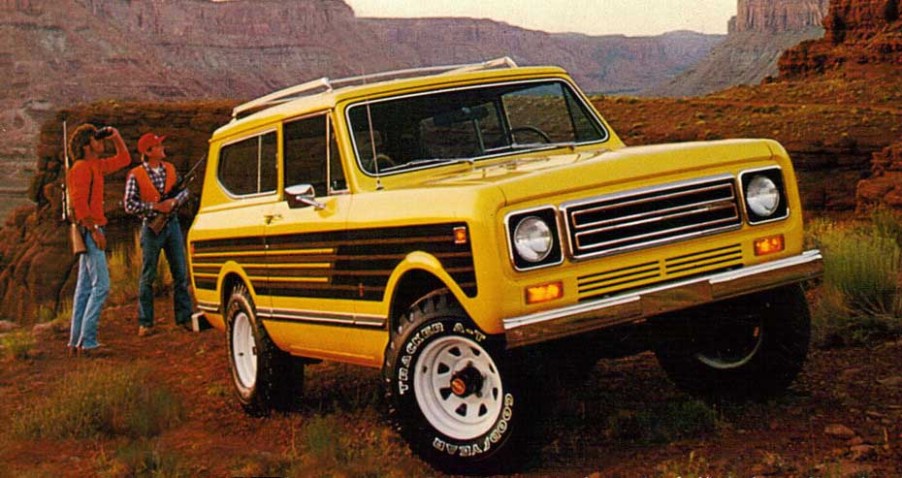
International Scout IIs Are Climbing In Value And Collectibility
The Bronco always gets the credit as the first four-wheel-drive SUV. But in reality, it was the International-Harvester Scout that actually was the first. And while those first-generation Scouts were good off-roaders, the second-gen is an exceptional example. Manufactured from 1971-1980 the Scout II was offered in different configurations with a multitude of interior and component options.
Now our friends at Hagerty Insurance have rated the last of the Scouts are one of their top ten “Bull Market” selections for 2020. That means these showed they were ramping up in collectibility and interest in 2019 indicating they are on a collector trajectory. It also means if you want one you should get one while the prices haven’t gone through the roof.
Lots of advantages to an International Scout II

Compact and nimble the Scout is a full foot shorter than a Blazer and has a two-foot tighter turning radius than a CJ-7 Jeep from this era. Then, there were also four engines offered to tailor your Scout for purposes. And finally, it was available with a soft top, hardtop, a removable steel top, or as a pickup.
Beyond that, there were different interiors fabrics, bumpers, tires, wheels, and decal and graphic packages. Especially in the last year or two, there were a lot of different graphics packages available to help give variety to a vehicle on its way out.
There were plans for a new Scout but nothing materialized

There had been two composite “future Scouts” created and developed to a certain point, but nowhere near production. Though similar to each other, they were two completely different vehicles. The second, called “SSV” for Scout Supplemental Vehicle, was a running fiberglass concept on a 100-inch wheelbase. Both were paraded around to shows and events throughout the latter-1970s. It certainly looked like another Scout would soon be available. But nothing ever materialized that pointed towards production.
In 1979 there were plans in the works for an all-new 95-inch wheelbase Scout III, powered by a Nissan four-cylinder engine. However, it never went beyond initial design and development. The general strike in 1979 that lasted six months hurt International financially. To that time it was the longest UAW strike in its history.
With the Travelall and variants discontinued there was no economy of scale

With the Travelall and pickup-and their variants gone, the Scout was the only passenger vehicle International made. There was not the economy of scale that existed with having variations of the platform. An all-new Scout would have taken too much development money to get to production. Also, International was on the eve of launching its 9670 semi-trucks and was gearing up for massive production. That was the first conventional and cab-over in almost two decades and International was all-hands-on-deck for it.
So circumstances in its control, and out of its control doomed the Scout.
While Hagerty admits what we already know; that the Bronco and Blazer have out-appreciated the Scout, its values are climbing. That’s because they can have a lot of what makes those two SUVs fun and collectible for a lot less money. To put it simply; Low buy-in, high ceiling.
The one thing to stay away from if you’re looking for a Scout II

If there is one thing to watch out for, it’s rust. Even after only a couple of harsh winters Scouts would start the brown bubbling at certain body joints or in areas that easily trapped water and debris. Don’t buy a Scout that exhibits more than just a very small amount of rust. Unless you can do the job and do it correctly, it will bury you financially to fix these problems.
Find the nicest one you can, hold your breath, and go for it. The Scouts are unusual, funky, and fun.



